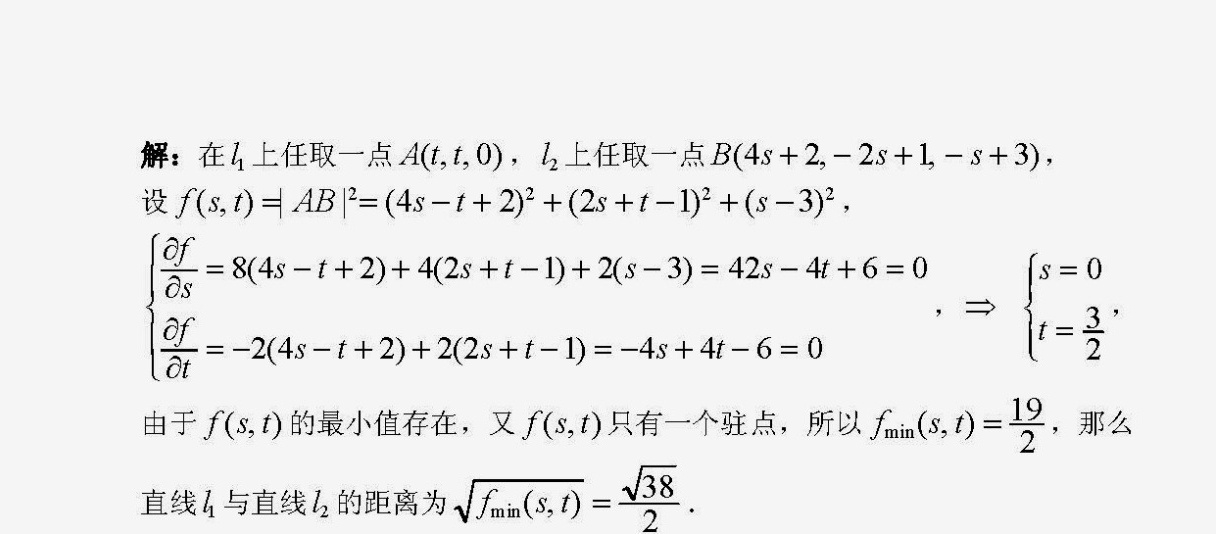题目
求直线l1: =dfrac {y-1)(-2)=dfrac (z-3)(-1) 的距离.

题目解答
答案

解析
步骤 1:确定直线l1和l2上的点
在直线l1上任取一点A(t,t,0),在直线l2上任取一点B(4s+2,-2s+1,-s+3)。
步骤 2:计算向量AB的模的平方
设 $f(s,t)={|AB|}^{2}={(4s-t+2)}^{2}+{(2s+t-1)}^{2}+{(s-3)}^{2}$。
步骤 3:求f(s,t)的最小值
对f(s,t)求偏导数,得到 $\left \{ \begin{matrix} \dfrac {\partial f}{\partial s}=8(4s-t+2)+4(2s+t-1)-2(s-3)=42s-4t+6=0\\ \dfrac {\partial f}{\partial t}=-2(4s-t-2)+2(2s-t-1)=-4s+4t-6=0\end{matrix} \right.$,解得 $\left \{ \begin{matrix} s=0\\ t=\dfrac {3}{2}\end{matrix} \right.$。
步骤 4:计算最小值
由于f(s,t)的最小值存在,又f(s,t)只有一个驻点,所以 ${f}_{min}(s,t)=\dfrac {19}{2}$。
步骤 5:计算直线l1与直线l2的距离
直线l1与直线l2的距离为 $\sqrt {{f}_{min}(s,t)}=\dfrac {\sqrt {38}}{2}$。
在直线l1上任取一点A(t,t,0),在直线l2上任取一点B(4s+2,-2s+1,-s+3)。
步骤 2:计算向量AB的模的平方
设 $f(s,t)={|AB|}^{2}={(4s-t+2)}^{2}+{(2s+t-1)}^{2}+{(s-3)}^{2}$。
步骤 3:求f(s,t)的最小值
对f(s,t)求偏导数,得到 $\left \{ \begin{matrix} \dfrac {\partial f}{\partial s}=8(4s-t+2)+4(2s+t-1)-2(s-3)=42s-4t+6=0\\ \dfrac {\partial f}{\partial t}=-2(4s-t-2)+2(2s-t-1)=-4s+4t-6=0\end{matrix} \right.$,解得 $\left \{ \begin{matrix} s=0\\ t=\dfrac {3}{2}\end{matrix} \right.$。
步骤 4:计算最小值
由于f(s,t)的最小值存在,又f(s,t)只有一个驻点,所以 ${f}_{min}(s,t)=\dfrac {19}{2}$。
步骤 5:计算直线l1与直线l2的距离
直线l1与直线l2的距离为 $\sqrt {{f}_{min}(s,t)}=\dfrac {\sqrt {38}}{2}$。